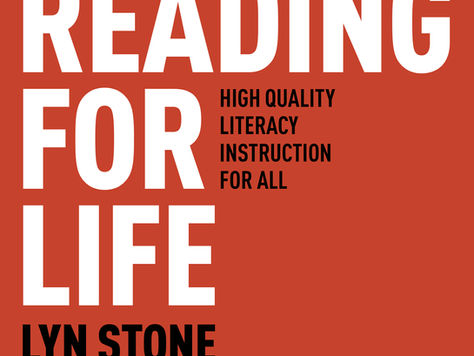
Book Review: Reading for Life
Reading for Life is written by Lyn Stone, who works in Victoria as a linguist, school consultant and tutor of children with literacy difficulties. Stone is a fierce and ardent advocate for evidence-based literacy instruction, and she expresses this position well, employing a persuasive and sharp style of writing from the first page to the last.
By Nicola Bell
The book’s content is roughly divided into four sections. The first section provides some background from the author’s perspective about common linguistic concepts and terms. Being a word nerd, I would have liked to read more about how the referenced theoretical reading models came about and fitted together – especially from the author’s perspective as a linguist. That said, this part of the book is still interesting and easily digested. The key argument I drew from the early chapters was that, “like word-level automaticity, understanding what you read is the destination, not the journey” (p. 36). This quote effectively captures a point often ignored by advocates of Whole Language – that it is not okay to infer anything concrete about reading acquisition from examining the end product (i.e., skilled reading).
The second section of the book (“The Reading Wars”) contained my favourite chapters. The historical context provided by Stone’s descriptions of national reports and government inquiries relating to phonics instruction was thought-provoking, and very helpful to those who might stumble, uninformed (or misinformed), into the trenches of the reading wars.
The third section follows nicely on from this contextual information, to describe the biases that contribute to anti-scientific thinking around literacy acquisition. Towards the end is also a poignant explanation of why not to classify dyslexia as a “gift”: as quoted by Stone’s daughter, “My strengths are my own and not the result of dyslexia” (p. 133).
The final chapters of the book contain practical examples of techniques to target – among other things – handwriting, phonological awareness, phonics, fluency and comprehension. It is clear from reading these chapters that the author has substantial knowledge of the word-level conventions guiding English spelling patterns. Here and elsewhere, the author’s message could have benefited from fewer, clearer subsections, as well as additional references to the research literature. Nevertheless, readers with a similar degree of expertise to Stone would likely find this section full of valuable tips to incorporate into their practice.
On the whole, I see Reading for Life as a useful addition to my bookshelf. In particular, the “cheat sheet” of major players in the reading wars (p. 50-63) is a great idea, and the author’s perspective on dyslexia (p. 128-137) is well expressed. The frequent references to metaphors and the blog-style length and tone of each chapter also make this book a quick and easy reference guide for a variety of topics. As a consequence, Stone has successfully fulfilled her aim in producing a “starting point to help parents and teachers demand and supply a better deal for all children” (p. xvi).
Nicola Bell works in the MultiLit Research Unit as a postdoctoral research fellow. Nicola recently submitted her PhD (“Literacy development in children with cochlear implants”) to the University of Queensland. Her research interests extend to language and literacy development in all school-age children.
This article appeared in the June 2019 edition of Nomanis: www.nomanis.com